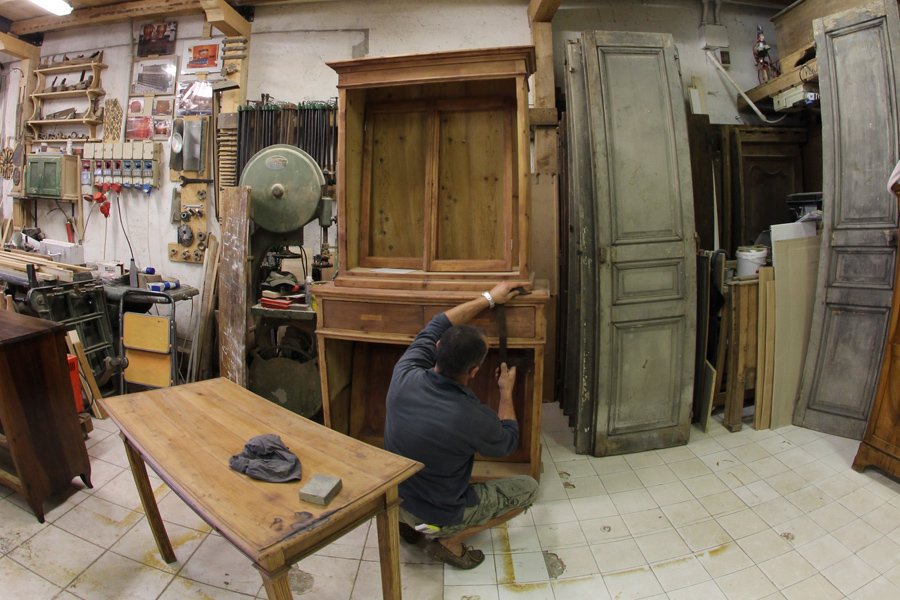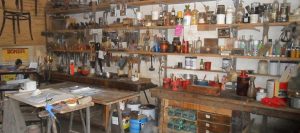Choice of place
This module is aimed at those who want to practice this activity as a hobby, even with the serious intentions, as well as those who intend to become true professionals.
Those who intend to create a workshop for hobby purposes are unlikely to have a lot of space available, more often it is a simple garage. The important thing is that the chosen space is as airy and bright as possible.
In a limited environment like this, it is often only possible to work at one piece at a time, but in the case of a hobby that can be sufficient. In a workplace, which is “stripped-down to the bare essentials”, the old saying rings true: everything in its place and a place for everything.
If this rule is not followed, it will soon become evident how each tool or implement will possess its own kinetic energy that will take it into hiding just when it is needed.
It is necessary that our workshop is supplied with:
Electrical sockets One or more lights to proper illuminate the working area: it should be remembered that artificial light especially that produced by fluorescent lights, changes the tone of the colour of the piece of furniture, reducing the red component of the colour and then making it less pleasant. Incandescent lamps on the other hand enhance the colour making it much warmer and pleasant.
A sink with running water An electric hot plate One or more shelves for tidy storage A worktable
Heating if the workshop is to be used in winter. It is important to note that polishing of a shellacked piece of furniture is not possible if the ambient temperature exceeds about 16°C.
If on the other hand the workshop is to be set up for professional purposes, there can be multiple rooms for the workshop and if it is to be professional, these are the indications, many of which are also useful for hobbyists.
The organization of a wood restoration workshop requires some precautions that prove crucial as they concern security, time and quality of results.
In the arrangement of machinery, equipment and materials it is best follow certain criteria of rationality and safety.
The first concern is the proper storage of flammable and/or toxic materials, placing them away from heat sources and in places where they will not be spilled accidentally.
In addition, all possible precautions must be taken to avoid the accidental setting in motion of electrical equipment, especially by people who are just visiting the workshop.
Secondly, as far as possible, it is necessary to separate the areas for the various phases of restoration to prevent, for example, that a piece of furniture, which is already polished, is damaged while another piece is being cleaned.
In the arrangement of the work benches natural and artificial lighting must be taken into account, reserving the best lighting for the phases of work that require most attention.
In order to get the best results in the shortest possible time, equipment and tools must be arranged in an orderly manner, so as not to waste time looking for them; this is summed up in the motto “everything in its place and a place for everything.”
The working area must be kept clean and tidy, as well as having positive effects on the health of those who work there; it greatly affects the quality of the result, especially during dyeing and polishing.
It is therefore appropriate to devote the last part of the working day to these tasks, so as to start the next day’s work in an orderly environment with no airborne dust.


